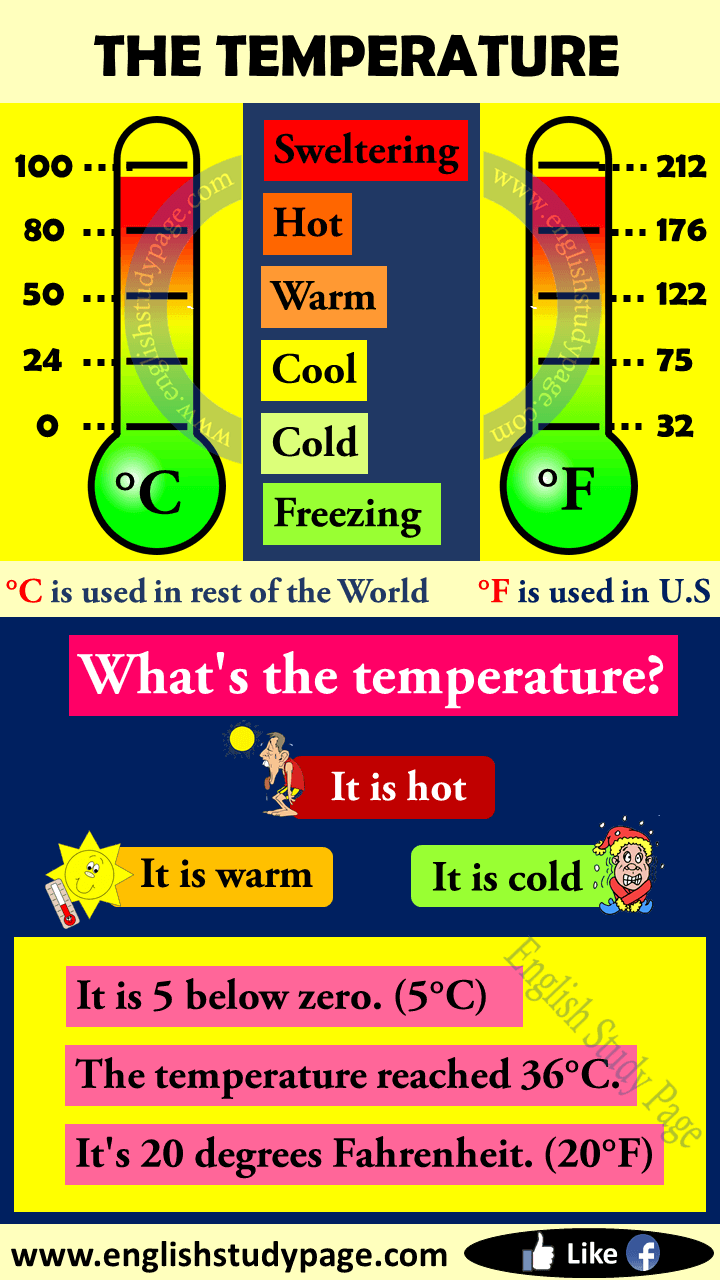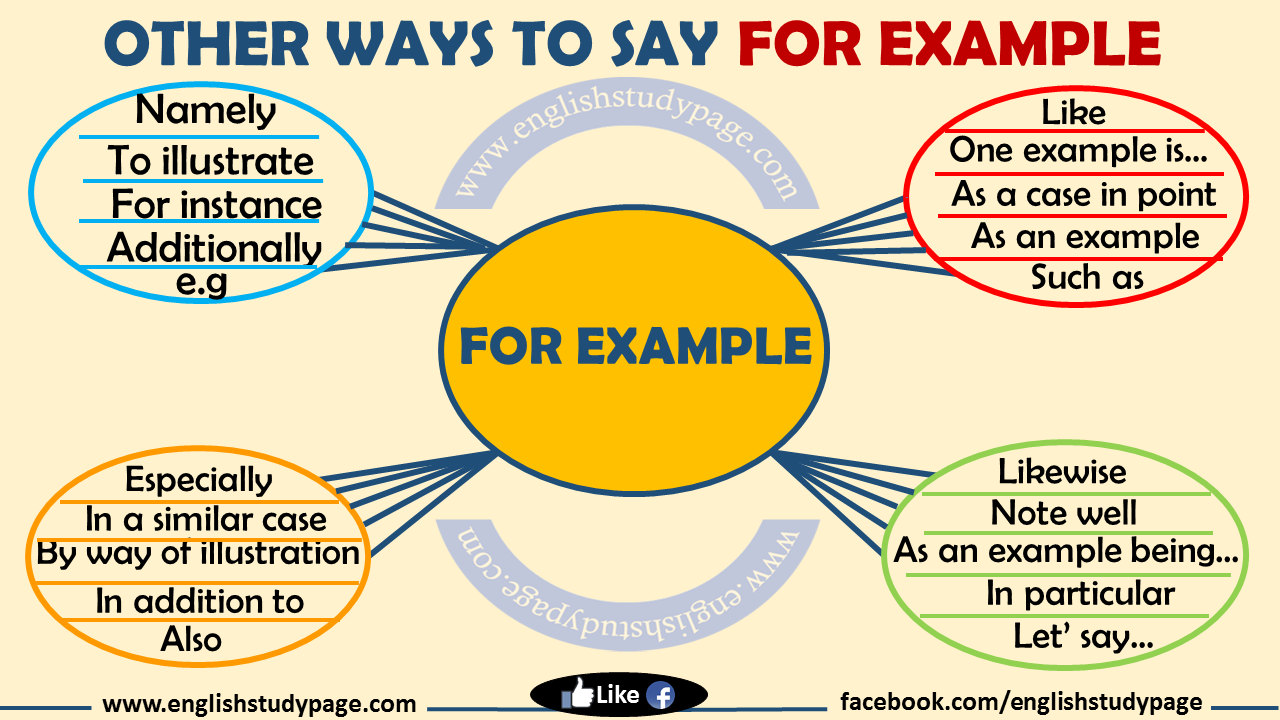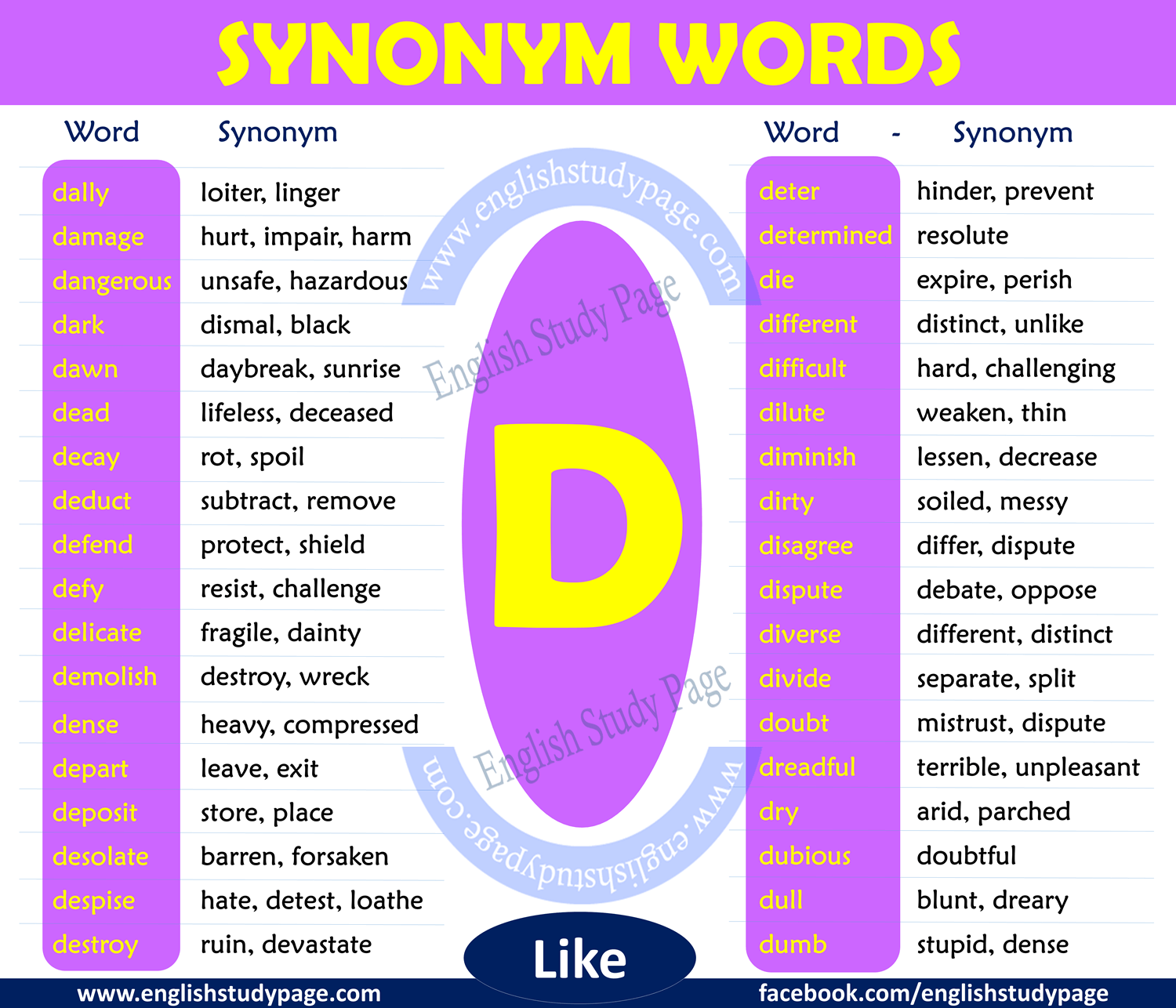
THE TEMPERATURE IN ENGLISH
Temperature shows the warmth or coldness of an object, air or human’s body.
We use a thermometer to measure the temperature of something. Temperature is usually measure in degrees. The “ ° ” symbol after a number means degrees.
In daily life, we mostly use degrees Celsius ( o C ) as a temperature unit. It is used in English-speaking countries apart from U.S. On the other hand, Fahrenheit ( o F ) is used as a temperature unit in the U.S.
Asking Temperature;
- It’s pretty cold / hot. What’s the temperature?
- What is the temperature there?
Expressing Temperature;
- It is 5 below. ( -5 degrees )
- It’s 30 degrees Celsius. (30 oC)
- It’s maximum 45°F in the morning.
- It’s 20 degrees Fahrenheit. (20°F)
- It’s two degrees above zero. (2 °C)
- It’s 35 below zero. (-35 °C )
- It is very hot outside. It is about forty-two degrees. (45°C)
- It is very cold today. It is about one degree above zero. ( -1°C )
- The temperature inside is plus 10 degrees. ( +10°C )
- The temperature outside is minus twenty degrees. ( – 20°C )
- It is over 25 oC.
- The thermometer showed a temperature of –38°C last night!
- The temperature reached 36°C.
- A: In which unit do you want to say the temperature ( Celsius or Fahrenheit )? – B: Please, give me the temperature in Celsius.
- The average temperature is 17 degrees but this temperature may change 3 degrees below and above. ( 17 °C +/- 3 )
- Water boils at 212°F. (at two hundred twelve degrees Fahrenheit) or Water boils at 100 °C ( at one hundred degrees Celsius ( centigrade ) ).
- Water freezes at 0°C. (at zero degrees Celsius) or Water freezes at 32 °F ( at thirty-two degrees Fahrenheit ).
- Your temperature is high / normal / low / below normal / too high / lower than normal, etc. It is 36.3 °C ( thirty-six point three degrees ) / 37 °C ( thirty seven degrees ) / 40.9 °C ( forty point nine degrees ),etc.
- The thermos keeps liquids at a constant temperature ( hot or cold ).
Words and Adjectives Expressing The Temperature
Temperature shows the amount of heat of something, an object or human’s body. ( Noun )
Thermometer is the instrument for measuring the temperature of something. ( Noun )
Cold means having low temperature. ( Adjective )
Hot means having high temperature. ( Adjective )
Warm means having moderate temperature. ( Adjective )
Cool means slightly cold in a pleasant way. ( Adjective )
Chilly means cold. ( Adjective )
Freezing means extremely cold or having the temperature below 0 °C. ( Adjective )
Mild / Moderate / Temperate means neither very hot nor very cold. ( Adjective )
Equable means not changing suddenly. ( Adjective )
Boiling / Scorching means very hot. ( Adjective )
Stifling / Sweltering means extremely hot in an unpleasant way. ( Adjective )
Some Temperature Values
The approximate temperature values used for some cases are given below;
| Temperature | Case |
|---|---|
| Below 0°C | Very cold |
| 0°C | Freezing point of water or Melting point of ice |
| 0°C – 10°C | Cold |
| 4°C | Water has its smallest volume at this temperature |
| 10°C – 15°C | Cool |
| 15°C – 25°C | Warm |
| 25°C | Room temperature |
| 25°C – 35°C | Hot |
| Above 35°C | Very hot |
| 37°C | Body temperature |
| 100°C | Boiling point of water or Condensation point of vapor |
Most Common Temperature Scales
Celsius, also called Centigrade, is a temperature scale in which water freezes at zero degrees and boils at 100 degrees. ( °C )
Fahrenheit is a temperature scale in which water freezes at 32 degrees and boils at 212 degrees. ( °F )
Kelvin is a temperature scale in which water freezes at 273 degrees and boils at 373 degrees. ( °K )



